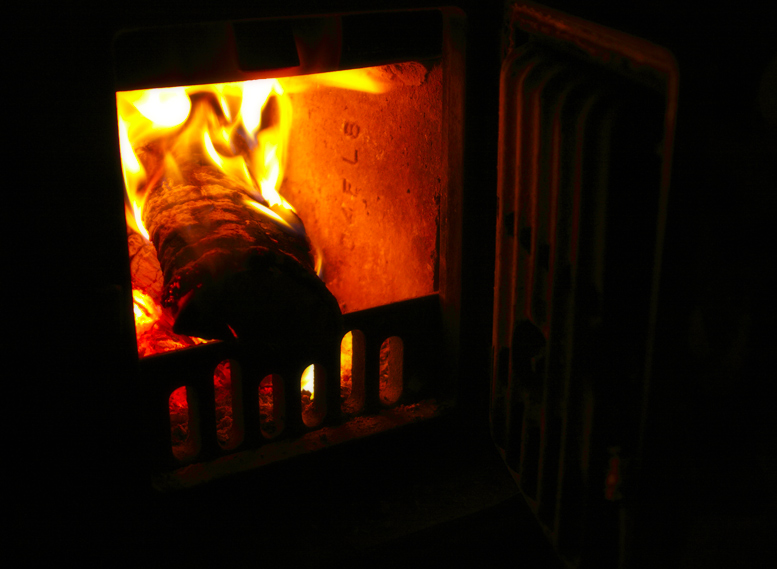Renewable Energy
Posted on March 17, 2014

The tall, mostly dead red oak on the eastern edge of the farmette still stands this late, long winter, saved mostly by this late, long winter.
The majestic, strong-armed tree, my age or a little more, had a date with the saw and maul as soon as the weather turned cold. Deep snow and face-cracking cold, however, kept the aging sawyer closer to the wood stove where that oak would, sooner or later, meet its ashy end than to the tree itself.
It’s not the only dead tree to survive the winter. Most years the wood I saw and split comes from a dozen or so dead trees in a rolling, beautiful hardwood forest owned by a generous farming neighbor. He likes his woods clean; I like his wood. It’s the basis for a years-long deal that keeps him cool and me hot.
This year, however, I’ve cut nary of cord, jag or wheelbarrow of anything because while I love to saw, split, carry and stack wood in the winter cold, I hate doing any of those warm jobs in snow. I like my woodcutting weather like my friend says he enjoys his martinis: ice cold and very dry.
And neither of us, it seems, likes to get wet anymore.
It was the same on the big, southern Illinois dairy farm of my youth where a round, tall Warm Morning woodstove glowed hot throughout the winter months in our farmhouse kitchen. Wood for it came from the storm-wracked trees cut, split and stacked long before any snow fell.
That wood, mostly iron hard pecan, burned hot as coal. If pecan wasn’t handy, sulfur-packed southern Illinois coal was added to the stove to boost its BTUs. I can still smell that coal and still see it aglow in the bottom of that Warm Morning.
Our farm’s hired hand bachelor brothers burned wood and coal every day of every winter throughout their decades-long employment. While we often shared the wood from any downed tree with them, they burned far more coal in their two-story, uninsulated tenant house than we.
I recall one evening milking session with Howard, our dairy’s herdsman, as he complained loud, long and uncharacteristically that the price of coal, at about $8 a ton, was “gettin’ him hot enough not to need none.”
When he cooled off the following week, a big, black pile of eons-old carbon bloomed next to a bare hollyhock near his kitchen door.
Sometime in the early 1960s, central heating was installed in both our home and the milking parlor. I’m not sure how the cows came to be on par with us when it came to indoor heat but I’m pretty sure the furnace in the dairy barn was bigger, ran better and supplied more heat than the furnace in our house.
(After that upgrade—from a tiny propane heater at one end of the long milking parlor and another, even smaller heater in the bulk tank room—it was easy to find any hired man at any time during any winter day. The cows had their loafing shed; so did the loafers who looked after ‘em.)
For decades thereafter I cut no wood because the houses the lovely Catherine and, later, Paul, Gracie and I lived in had no stoves. Then, with Paul and Gracie fledged and flown, we empty-nesters moved to a smaller nest with two woodstoves.
Bone-deep, almost-free wood heat soon followed.
This past fall, after nearly 20 years of red-hot service, both stoves were replaced with smaller, more efficient units. Neither gets fat on the well-seasoned wild cherry, red oak, black walnut and elm fed it and each pours forth warmth and delight no matter it’s the diet.
I’d tell you more but I gotta’ a red oak to take down and split. Well, sometime.
Share This